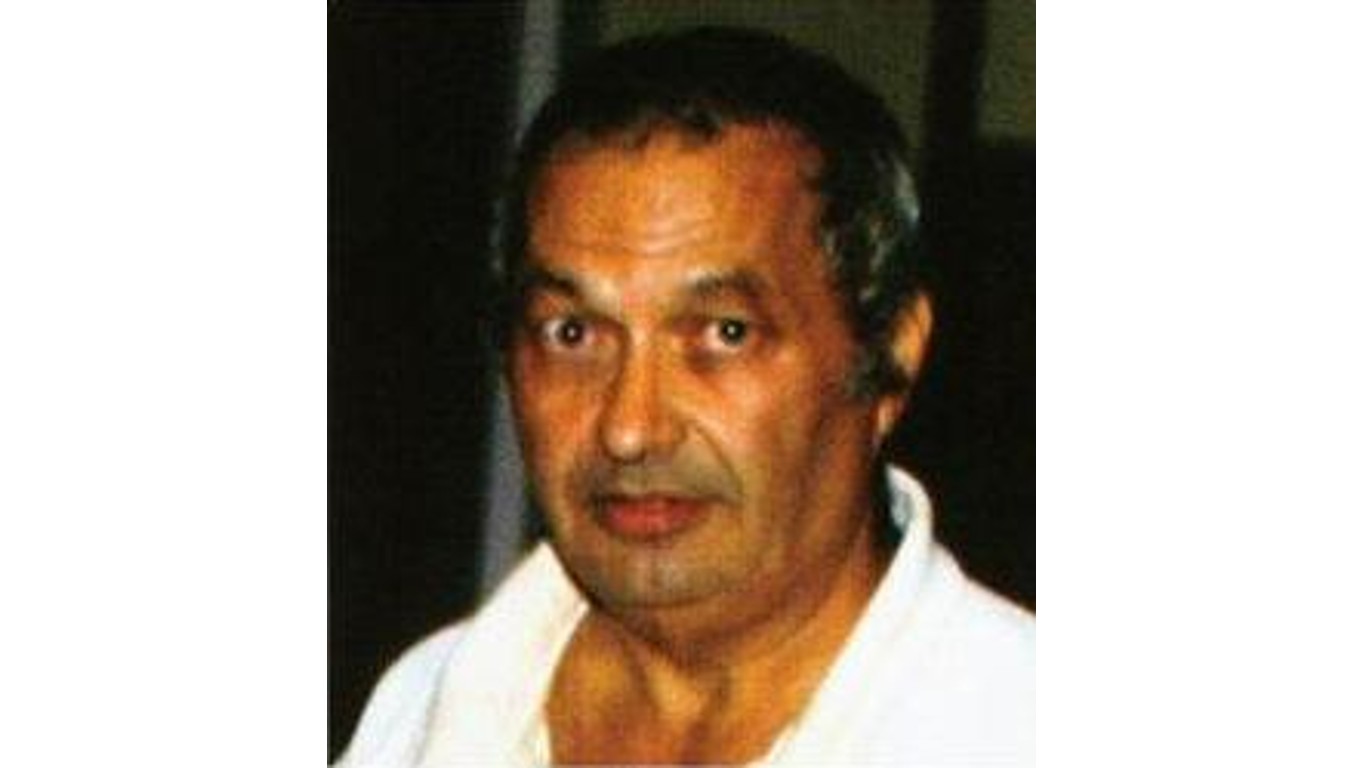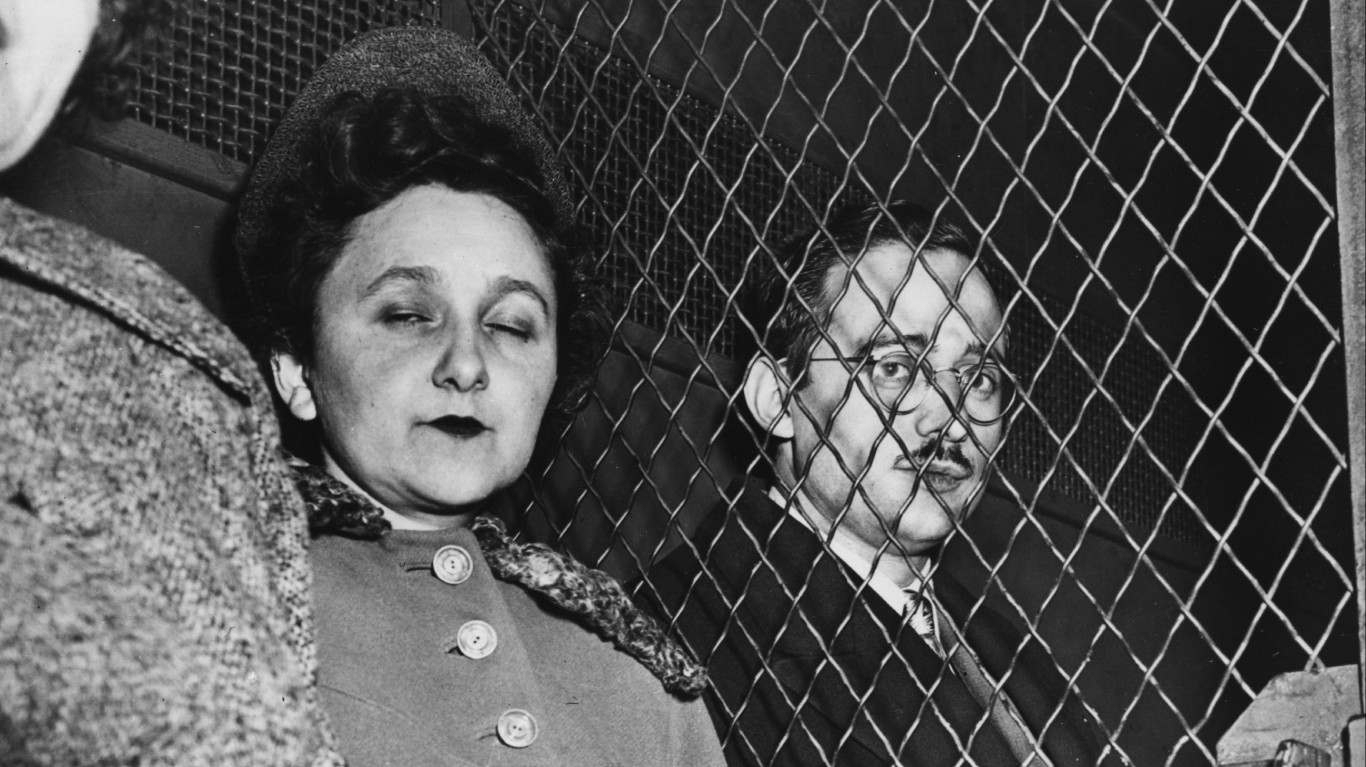
Spies have always lived among us. (There are even spies in the Bible – most famously Caleb, sent by Moses to report back surreptitiously from Canaan.) By definition, they have the ability to fly under the radar and serve as channels of sensitive information between hostile world powers. Although there are potentially thousands of secret agents that have taken their identities to the grave, others have not been so lucky.
To determine the most famous spies in history, 24/7 Tempo consulted sources including Britannica, Biography, and History, as well as various news sites. Those on our list may not always have been the most successful spies in history, yet they have become famous – largely for being caught, either through their own errors or as a result of betrayal by a former colleague. (The most famous spy of all, of course, is fictional. Here’s a look at every James Bond movie ranked worst to best.)
From the American Revolution to the Cold War, many unmasked wartime spies were tortured or executed. Others escaped and started new lives in foreign countries.
Some of the most infamous spies in history are responsible for prolonging armed conflicts, giving away battle plans or nuclear weapons diagrams, or selling out dozens of their colleagues for nothing other than money. Some were double-agents who fed false information to one country’s government while giving credible intelligence to another.
Click here to read about the most famous spies in history
Some spies, on the other hand, become renowned heroes after their wartime exploits came to light. Many agents who worked undercover during the Civil War or World War II, for instance, received medals and other honors for their bravery upon the war’s end. (Here are 50 of the most decorated war heroes in American History.)
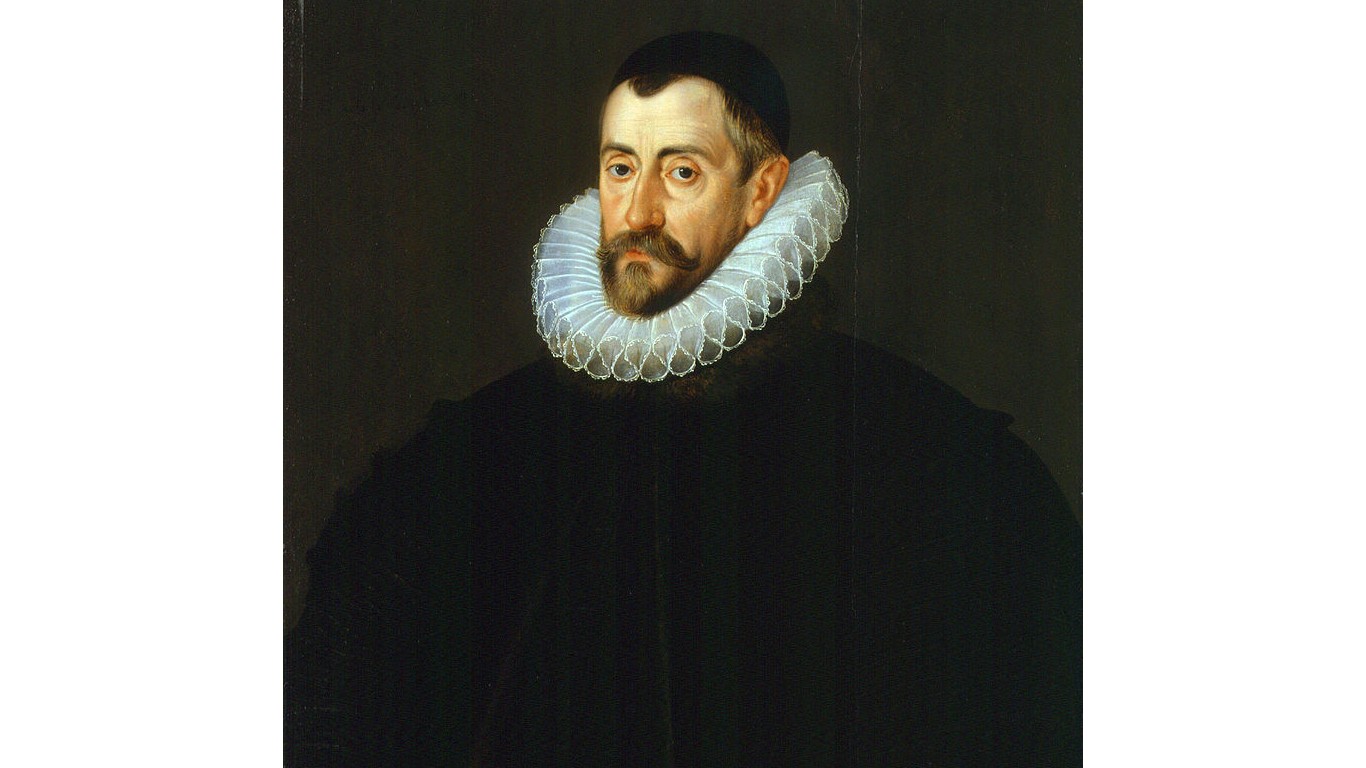
Sir Francis Walsingham (1532-1590)
Principal secretary to Queen Elizabeth I, Francis Walsingham made it his mission to sniff out Catholics during the era of the newly formed English Protestand Church. Using a team of cryptographers, forgers, and informers, this spymaster helped send many Catholics to their deaths including Mary, Queen of Scots.
[in-text-ad]
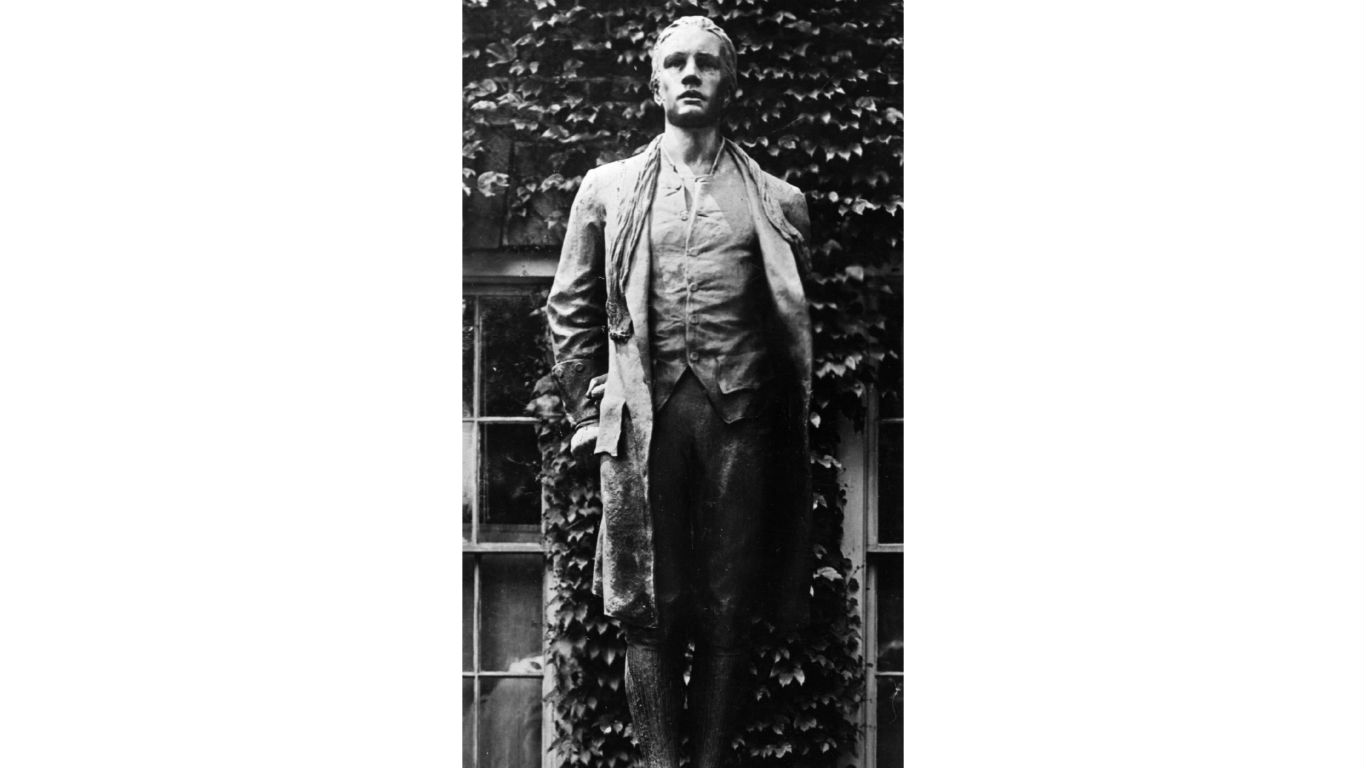
Nathan Hale (1755-1776)
A soldier during the American Revolutionary War, Nathan Hale traveled behind enemy lines disguised as a Dutch schoolmaster to gather intelligence on British troop movements. While attempting to return to American-controlled soil, he was captured with incriminating documents and subsequently executed by the British.
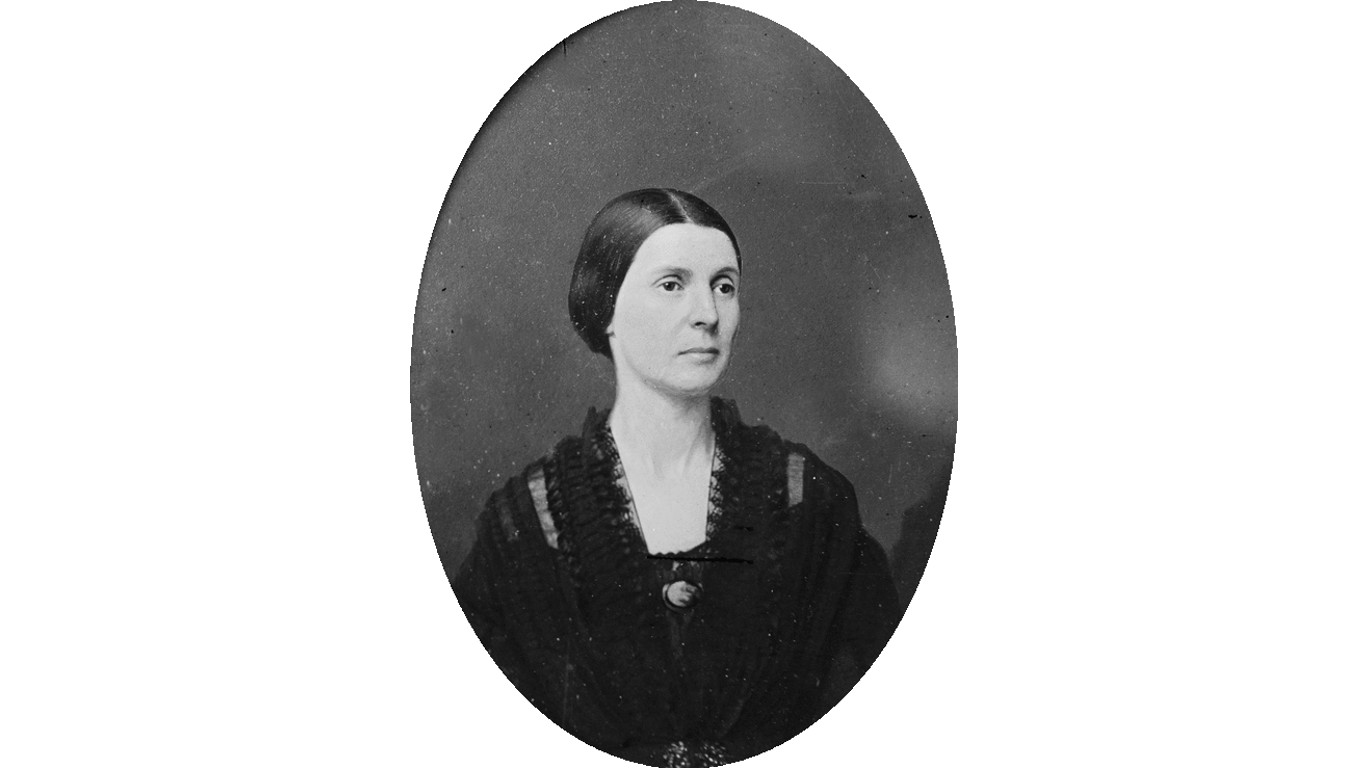
Rose O’Neal Greenhow (1813-1864)
A powerful socialite in Washington, D.C., Rose O’Neal Greenhow became a spymaster for the Confederates during the Civil War, leading a ring of pro-South intelligence operatives in Union territory. Her work is credited with helping the Confederate Army win the Battle of Bull Run.
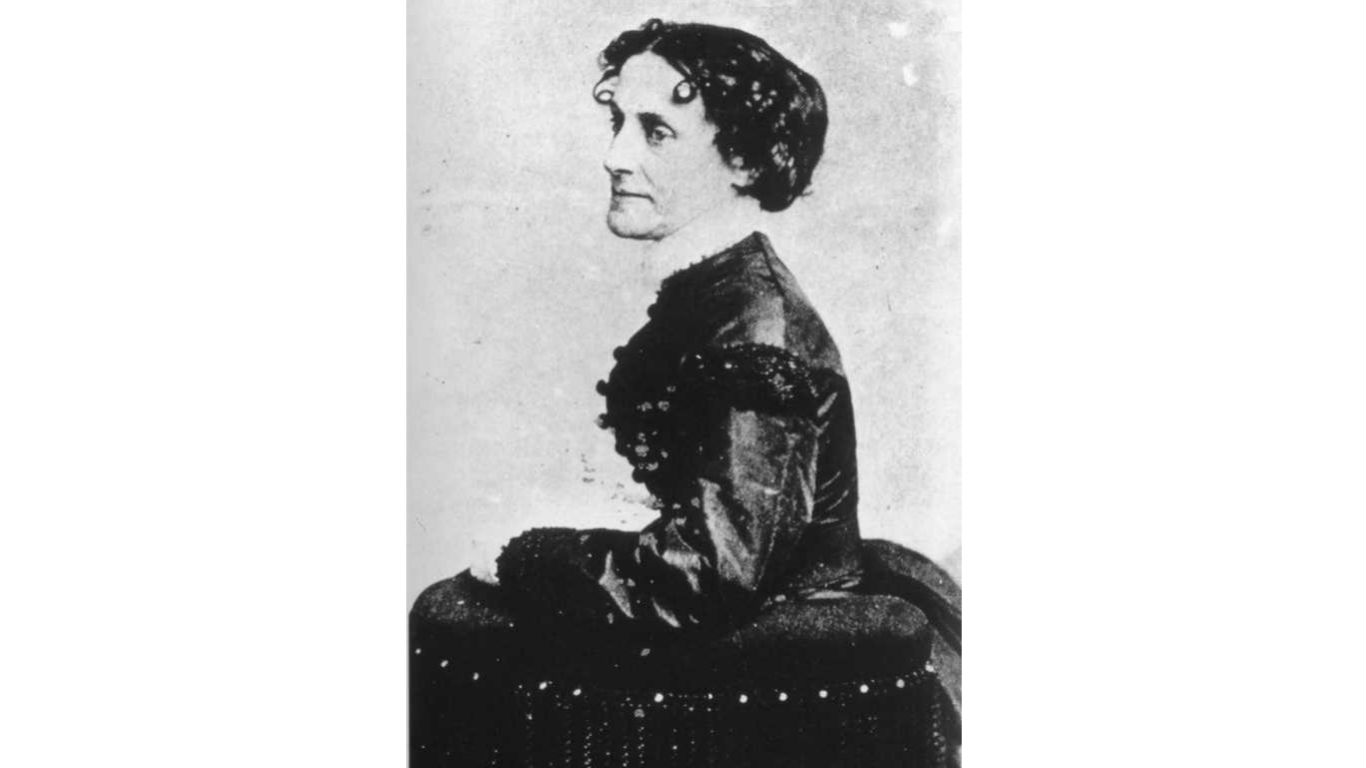
Elizabeth Van Lew (1818-1900)
Born in Richmond, Virginia, the capital of the Confederacy, Elizabeth Van Lew was the granddaughter of prominent abolitionist Hilary Baker, and an abolitionist herself. Upon the start of the Civil War, Van Lew began caring for wounded Union soldiers at a Confederate prison. Her position allowed her to gather intelligence from the prisoners to pass along to Union commanders, and to assist in prison escapes. She eventually became the leader of an indispensable spy ring called the “Richmond Underground.”
[in-text-ad-2]

James Armistead Lafayette (1748?-1830?)
An enslaved man during the American Revolution, James Armisted Lafayette – who served in the Continental Army under the Marquis de Lafayette, and took his name in tribute – aided the colonies by pretending to be a runaway slave and crossing enemy lines to gather intelligence on the British Army, while also feeding the British false information. His reports led to the Continental Army’s decisive victory at the Battle of Yorktown.
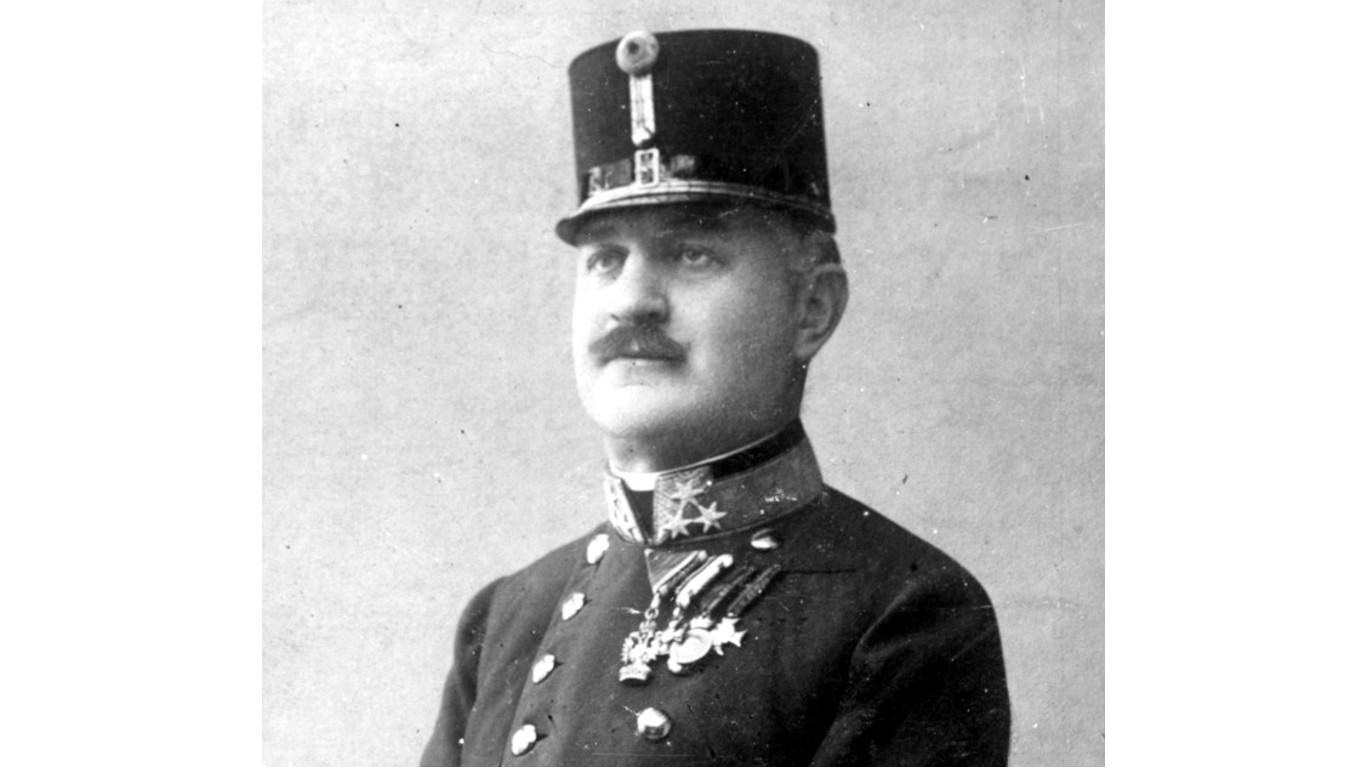
Alfred Redl (1864-1913)
As an Austrian military officer, Alfred Redl was the chief of a counterintelligence corps, and a leading figure in advancing espionage tactics prior to WWI. Eventually Redl’s successor discovered that Redl himself was also a spy, acting as a well-paid informant for the Russian Imperial Army; Redl committed suicide upon being exposed. Although his reasons for double-crossing his country will never be understood, historians believe his intel may have been responsible for Austria-Hungary’s massive losses during WWI.
[in-text-ad]
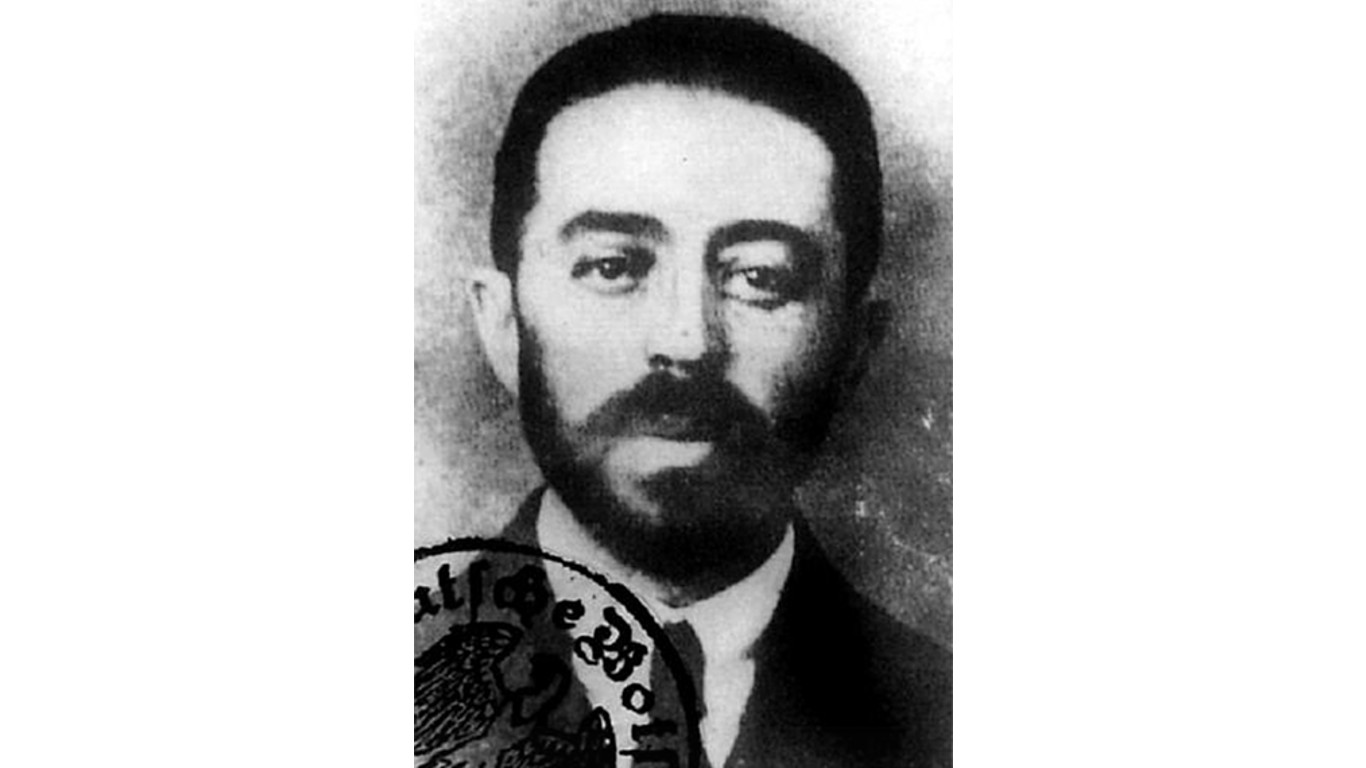
Sidney Reilly (1873-1925)
More than a double-agent, British Intelligence officer Sidney Reilly – also known as the “Ace of Spies” – is purported to have spied for at least four countries: Germany, England, Japan, and the Soviet Union. Active during WWI and the Russo-Japanese war, Reilly – who was apparently born Sigmund Rosenblum in Odessa – was uncovered during a failed assassination attempt on Vladimir Lenin. He was eventually captured, tortured and executed by the Soviets.
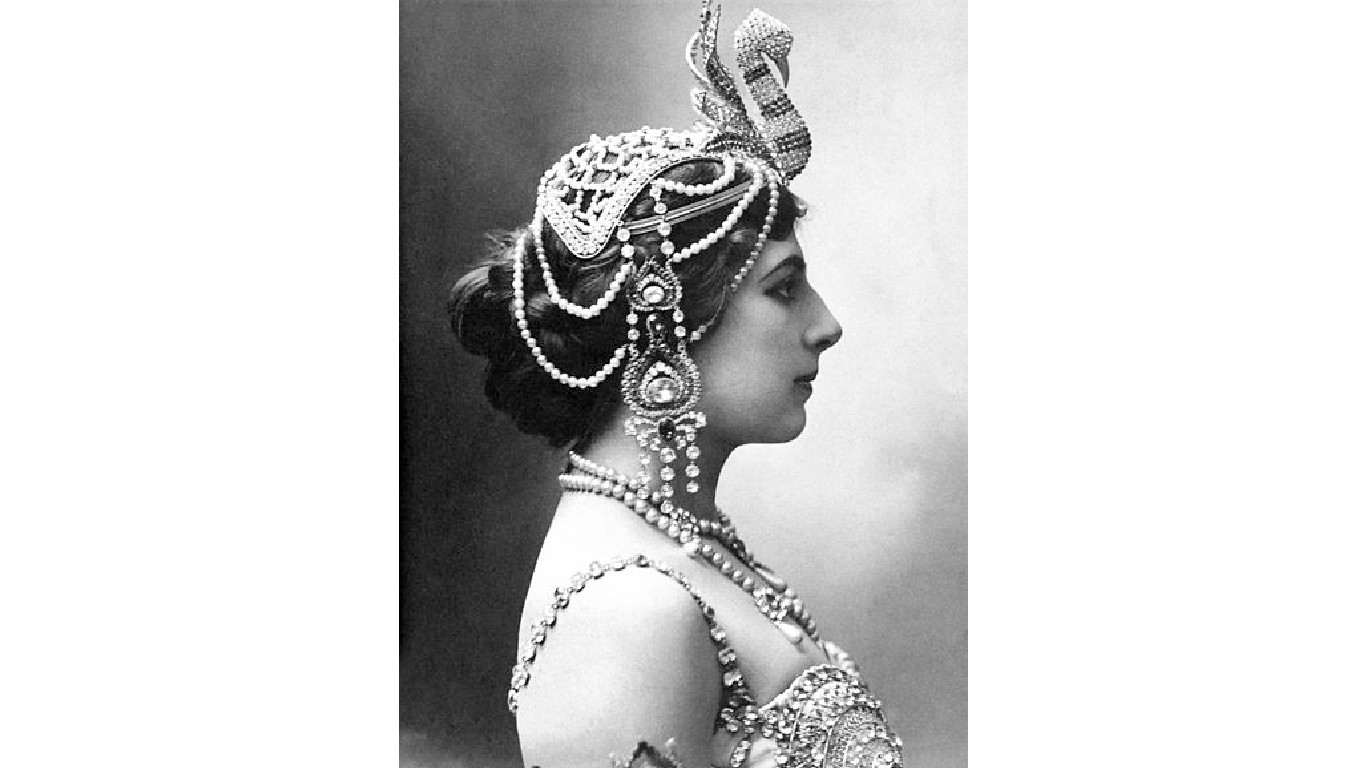
Mata Hari (1876-1917)
Margaretha Geertruida MacLeod was a Dutch exotic dancer and courtesan living in Paris during WWI. She agreed to spy for France in German-occupied Belgium, but was later accused of being a double agent for the Germans. Although her role as a spy is contested and historical documents suggest that she never gave any information of consequence to the Germans, the French tried and executed her by firing squad.
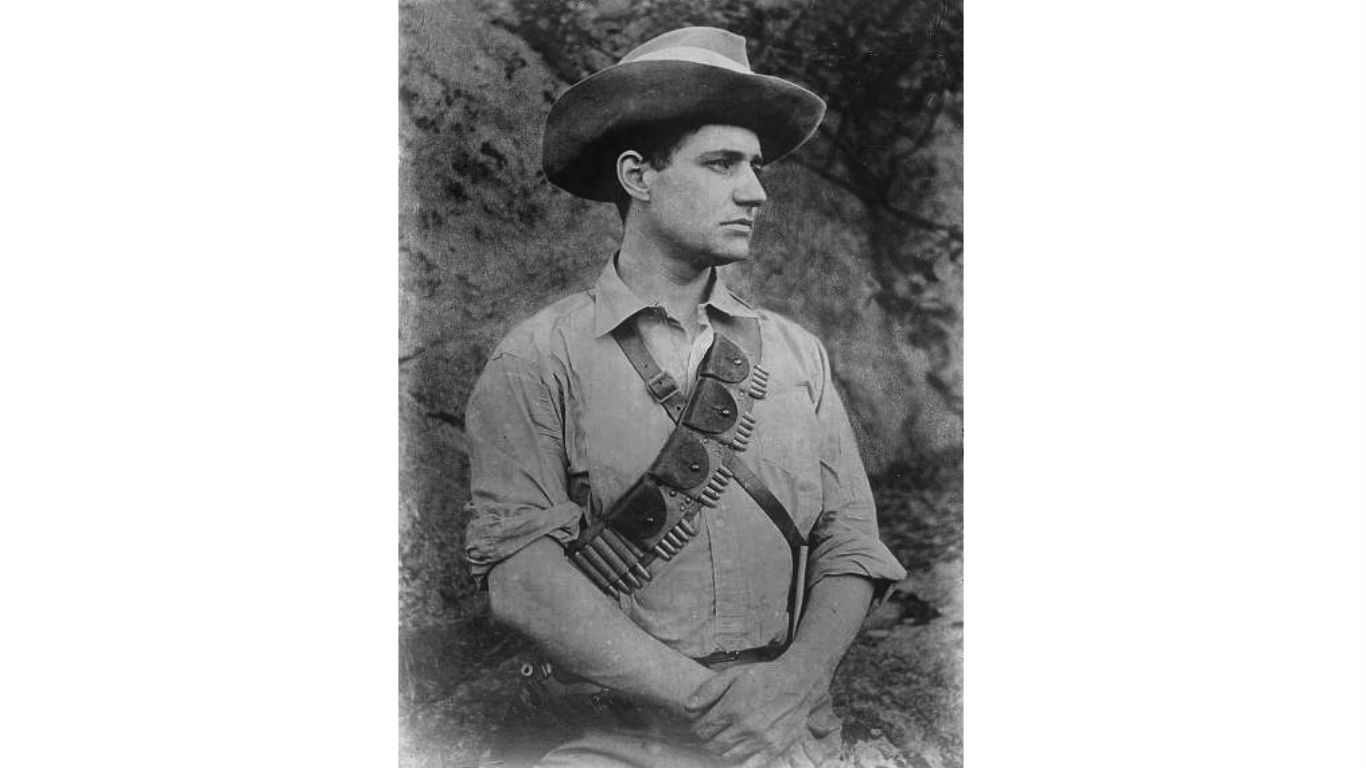
Fritz Joubert Duquesne (1877-1956)
A South African Boer and big game hunter, Fritz Duquesne acted as a secret agent and spymaster for Germany during both World Wars. His feats include infiltrating the British Army and becoming an officer, escaping enemy prisons four times, and planting bombs on British ships while disguised as a scientist. The FBI uncovered Duquesne’s infamous spy ring in 1941 and convicted 33 of its members.
[in-text-ad-2]
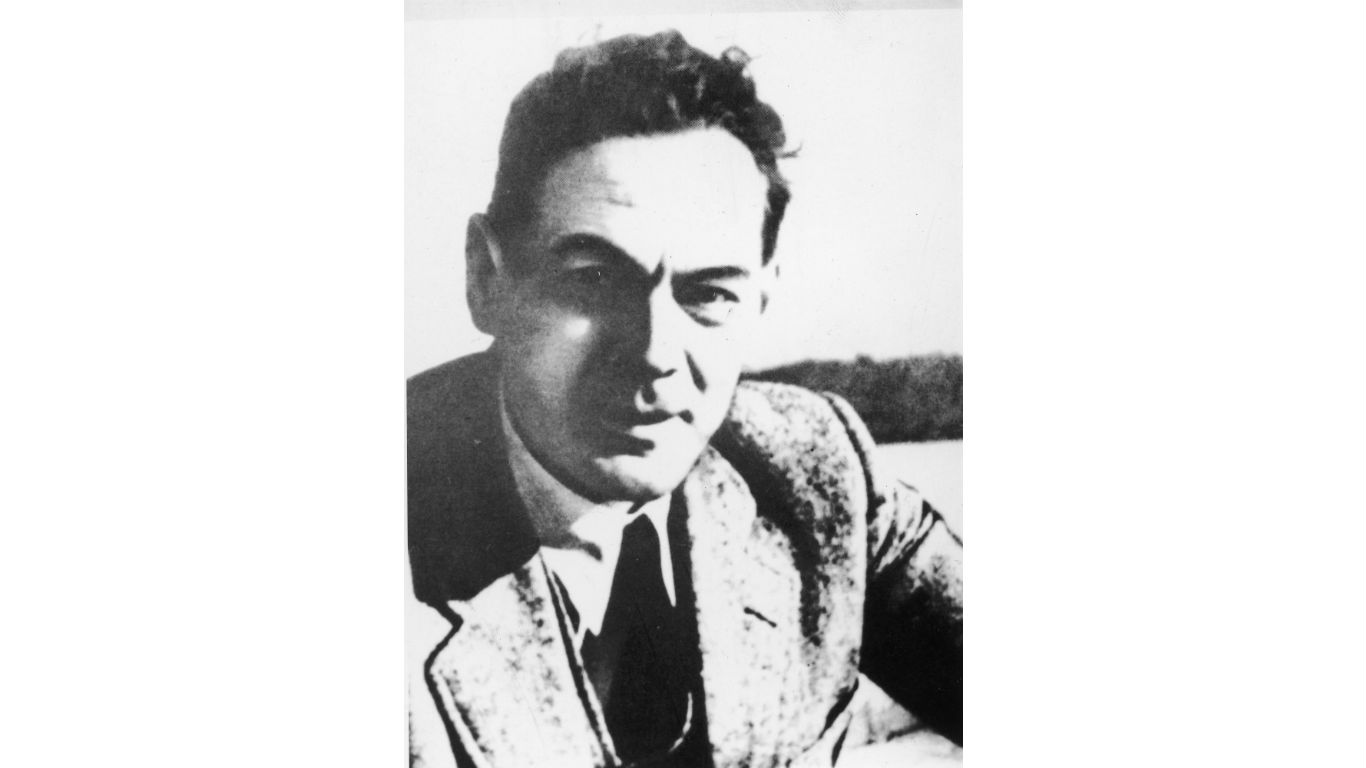
Richard Sorge (1895-1944)
Born in Imperial Russia but raised in Germany, Richard Sorge was a prominent Soviet spy prior to and during WWII, and is widely considered one of the greatest spies of all time. He worked undercover as a journalist in Germany and Japan, and alerted the Soviets of Hitler’s plan to attack the Soviet Union. He was eventually arrested in Japan, where he was tortured and executed by hanging.

William Stephenson (1897-1989)
A Canadian fighter pilot and spymaster, William Stephenson served as a British agent in New York City during WWII under the codename “Intrepid.” Stephenson organized the relay of classified information between the U.S. and England and is credited with having influenced American public opinion toward joining the war. He is among several spies who are said to be the inspiration for Ian Fleming’s fictional character James Bond.
[in-text-ad]
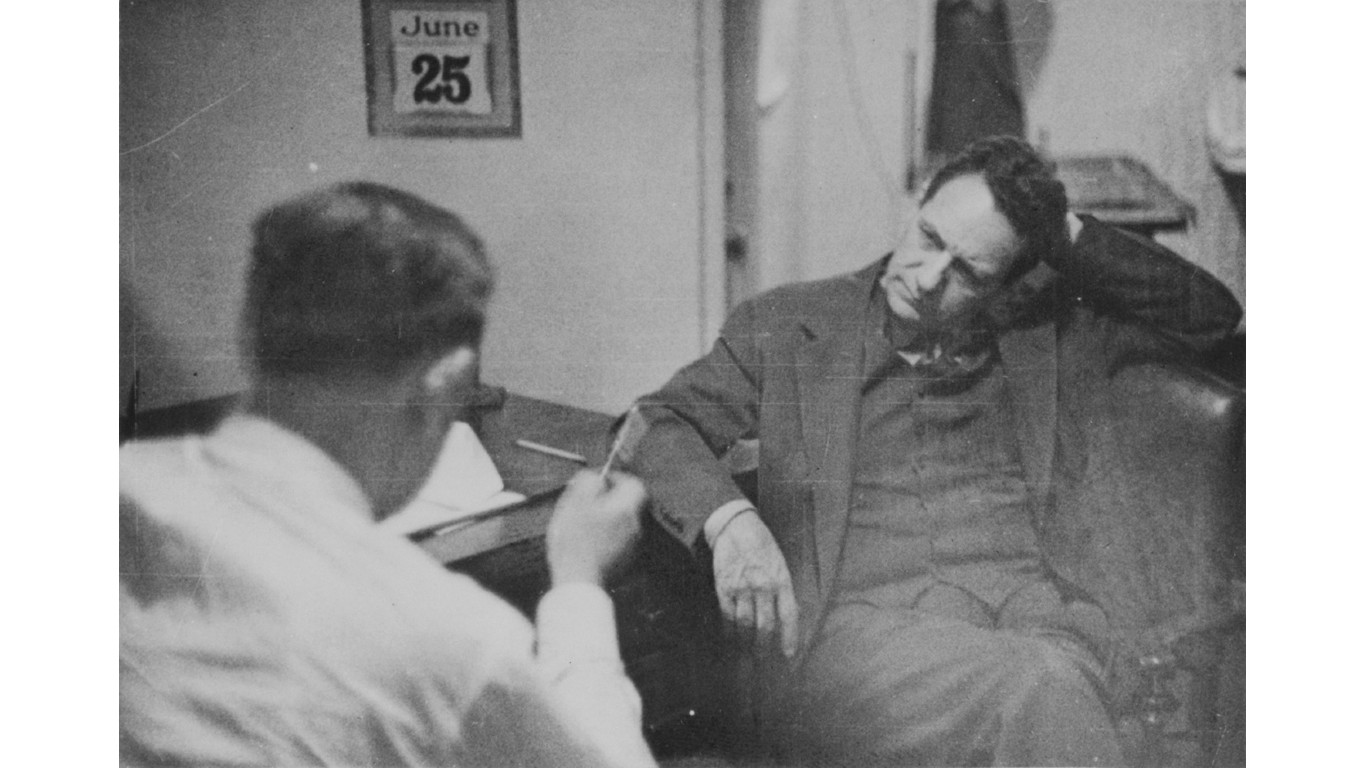
William Sebold (1899-1970)
A German-born U.S. citizen, William Sebold was visiting family in Germany when he was coerced into becoming a spy by several Nazi officials. He instead became the first double agent for the FBI, sending the Germans fake intelligence while receiving legitimate information from them. His work was instrumental in taking down the famous Duquesne spy ring.
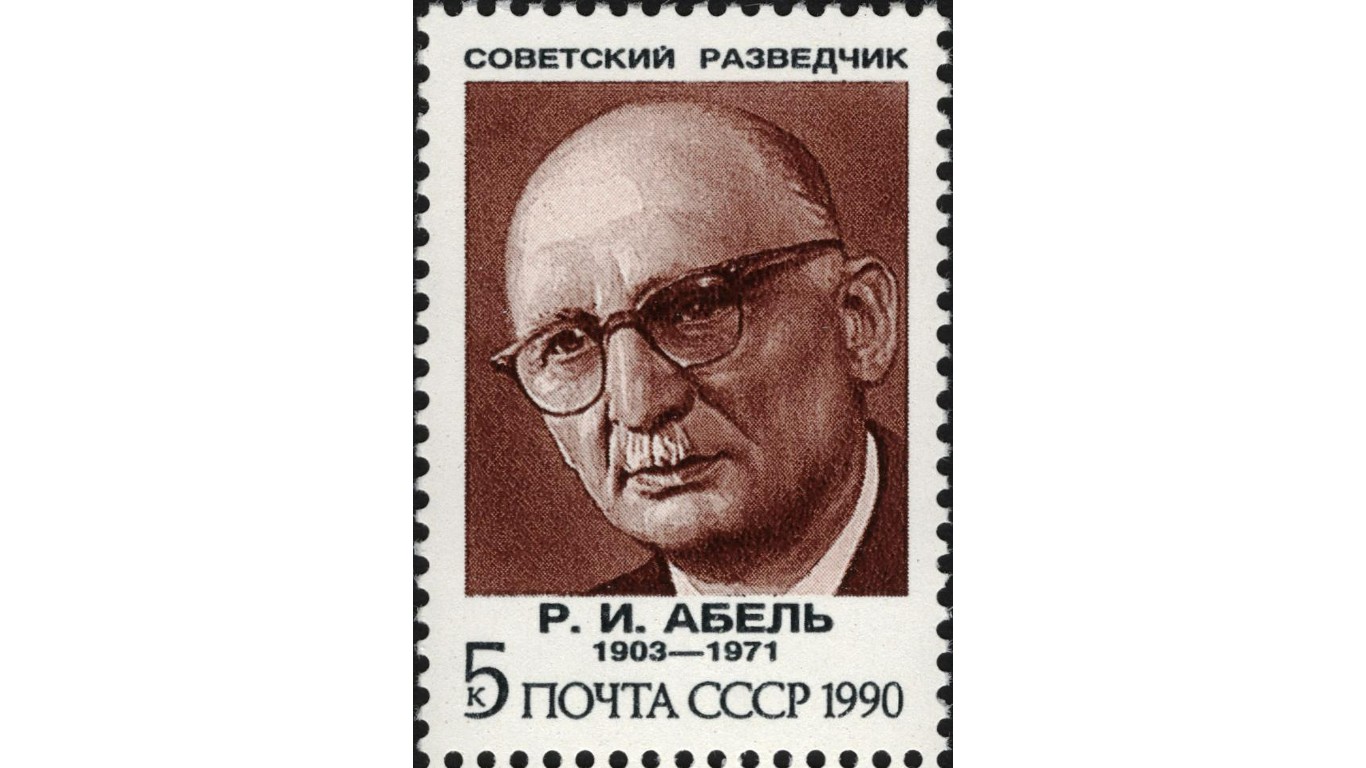
Rudolph Abel (1903-1971)
Born William August Fisher in England, Rudolph Abel moved to the Soviet Union in 1921 and joined the KGB in 1948. He was sent to work in a New York City spy ring, posing as a photographer, where he utilized short wave radio and hollowed out coins containing microphotographs of intelligence cyphers. Although he was eventually arrested by the FBI, he was later returned to the Soviet Union in exchange for downed U-2 pilot Gary Powers, where he received a hero’s welcome. His story is partially told in the 2015 film “Bridge of Spies.”
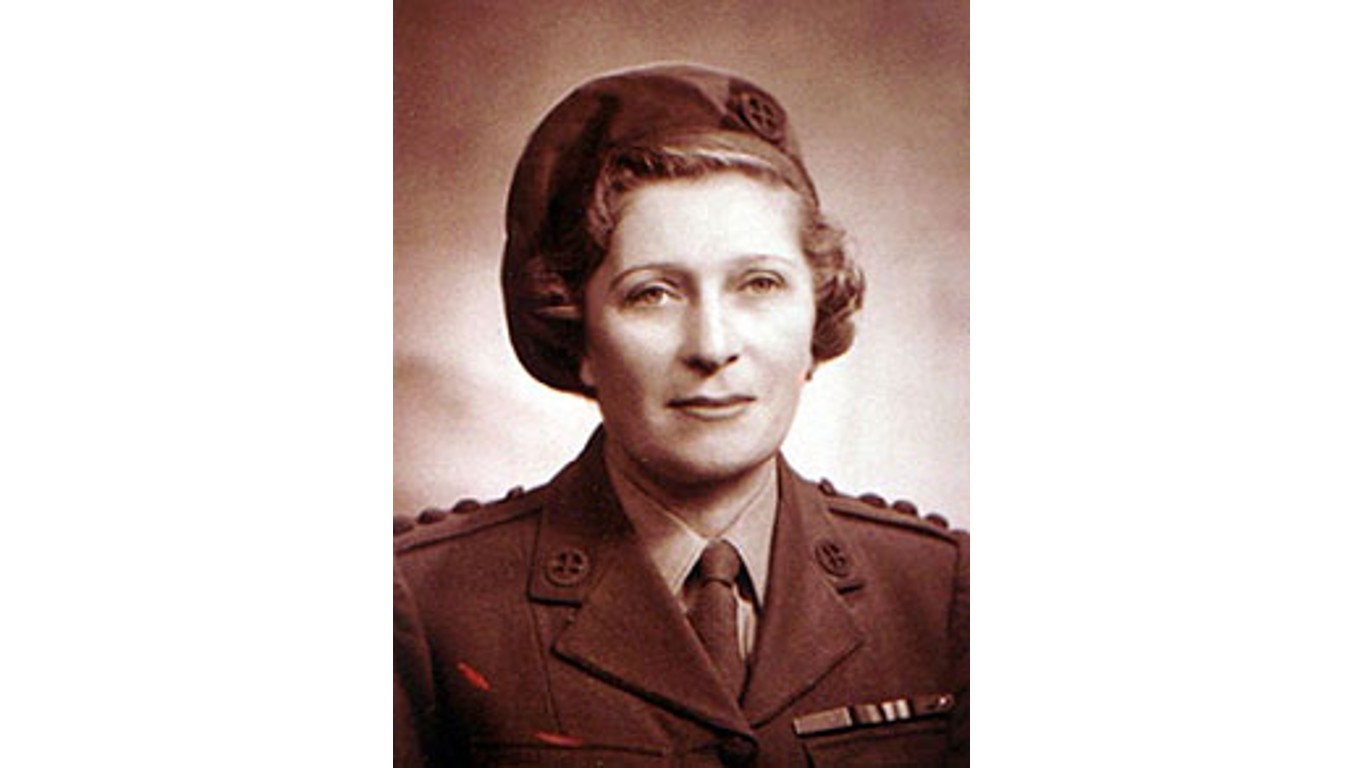
Lise de Baissac (1905-2004)
A British operative during WWII, Lise de Baissac parachuted into Nazi-occupied France where she helped arm and organize French Resistance fighters while pretending to be an amateur archaeologist. She bicycled around France collecting information and weapons, organizing on behalf of the Allies, and assisting other operatives in returning to England. Despite numerous run-ins with German soldiers, she was never caught.
[in-text-ad-2]
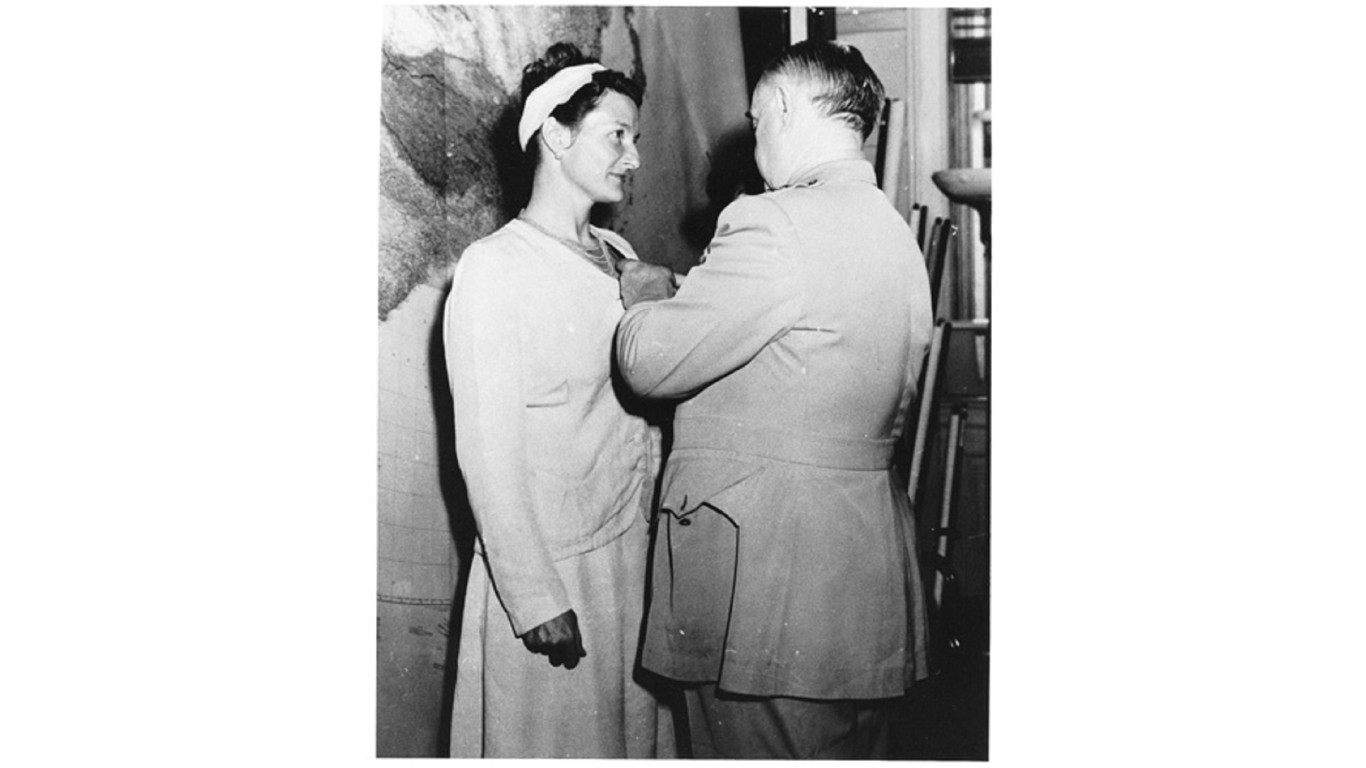
Virginia Hall (1906-1982)
Working for the U.S. and the U.K., Virginia Hall lived undercover in Vichy France and organized resistance movements during WWII. She helped other agents access money and weapons, and also secured safehouses, medical treatment, and escape routes for downed pilots. The Germans considered her the most dangerous of all Allied spies and called her “The Limping Lady,” as she was missing part of a leg and wore a prosthetic.
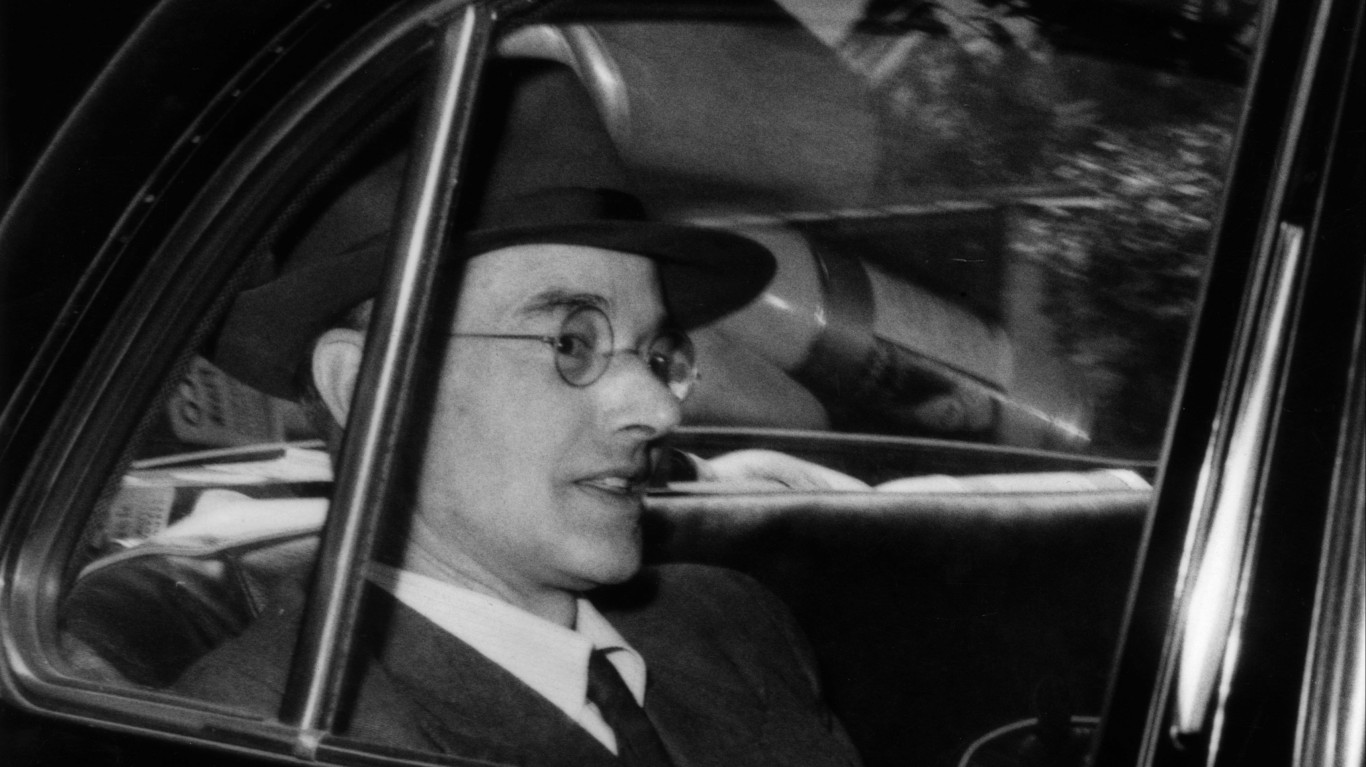
Klaus Fuchs (1911-1988)
A German nuclear physicist with communist sentiments, Klaus Fuchs fled Germany in 1933 and eventually found work in Britain’s “Tube Alloy” atomic project and the Manhattan Project. As part of a spy ring for the KGB, he organized with other famous spies including Morris and Lona Cohen to pass atomic secrets to the Soviet Union. Fuchs confessed to spying in 1950 and served nine years in a British prison before returning to East Berlin to a hero’s welcome.
[in-text-ad]
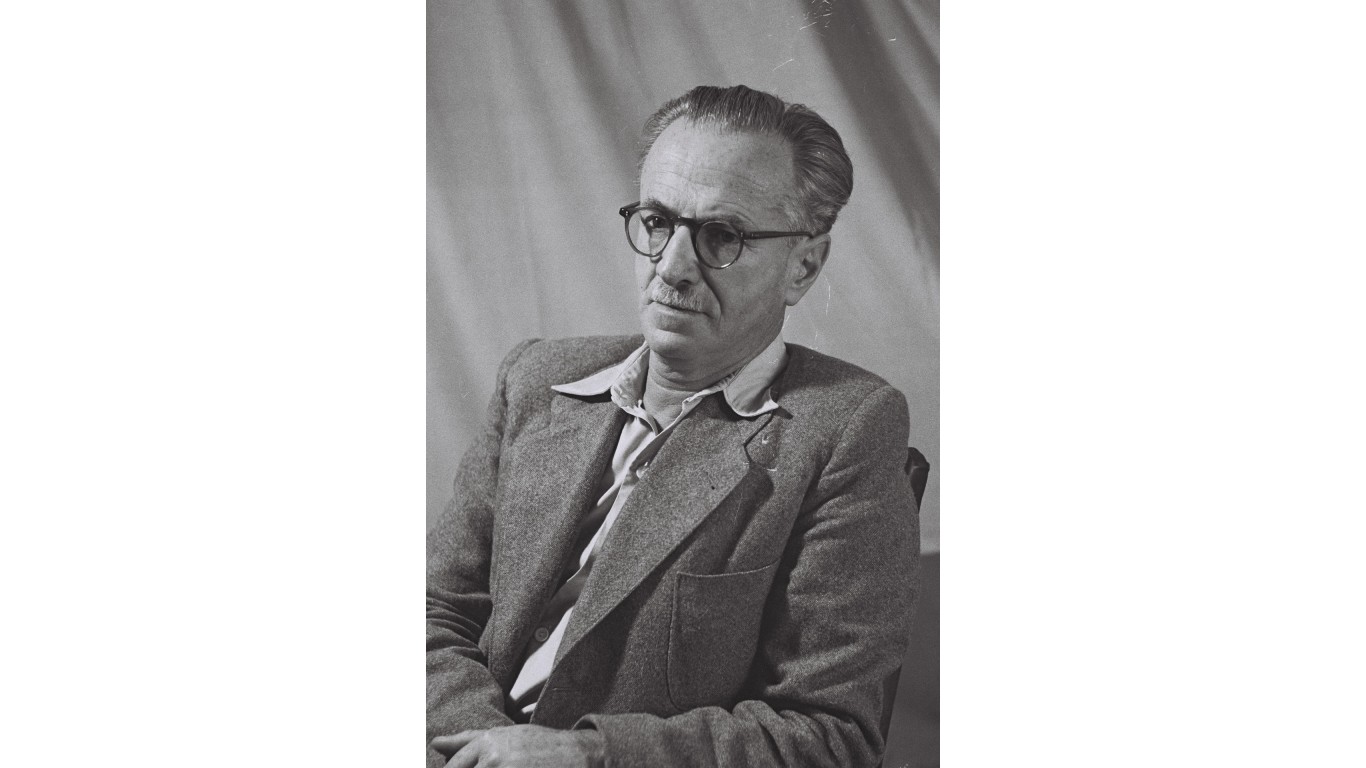
Yisrael Bar (1912-1966)
An Austrian-born Israeli citizen, Yisrael Bar was an Israeli military expert whose broad knowledge gained him a high position in Israel’s Ministry of Defense. In reality, Bar was a Soviet spy, and not even Jewish, who had infiltrated the Israeli government under the assumed identity of a man who had been dead for years. The extent of the information he passed on to the KGB will never be known, as Bar kept his lips sealed throughout imprisonment and died in prison.
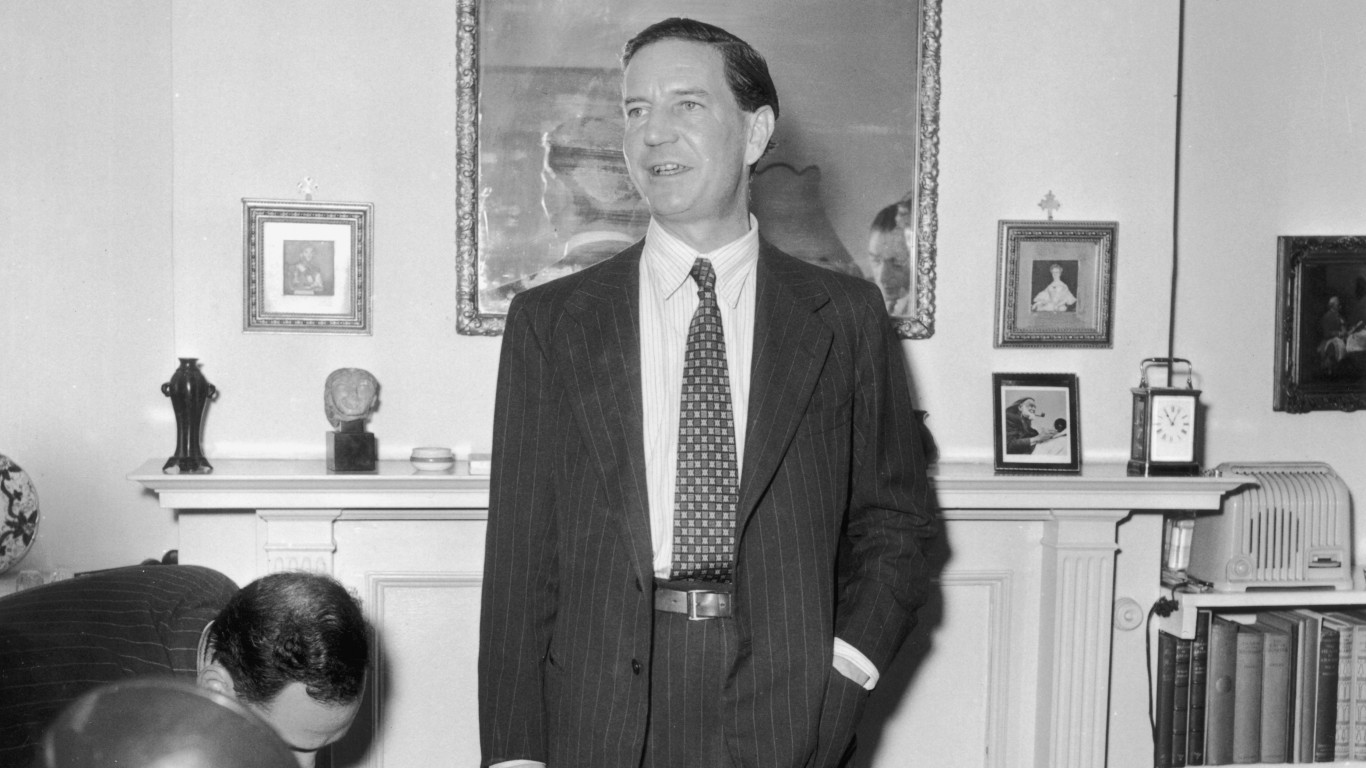
Harold “Kim” Philby (1912-1988)
A communist at Cambridge during the Cold War, Kim Philby became the head of a counterespionage section of the British Secret Intelligence Services. He was later revealed to be the most successful member of the Cambridge Five spy ring that passed British secrets to the Soviets from the 1930s to the 1950s. Philby defected to the Soviet Union before he was found out, and was never prosecuted.
Melita Norwood (1912-2005)
An assistant to the director of a British atomic research center, Melita Norwood passed atomic secrets to the Soviets for 37 years before finally being exposed at age 87, well into her retirement. Born to communist-sympathizing parents and a devout communist herself, Norwood asserted that her work helped avert World War III. She was never prosecuted.
[in-text-ad-2]

Julius Rosenberg (1918-1953) and Ethel Rosenberg (1915-1953)
The first American citizens ever to be executed for espionage, Julius and Ethel Rosenberg were convicted of spying for the Soviet Union in the ’40s as part a group that leaked atomic bomb diagrams. While Ethel and her brother were likely responsible for recruiting Julius, who served as a courier, Ethel’s role as a spy remains unclear. Prosecutors later admitted to pushing the death penalty on Ethel to coerce her husband into confessing his crimes.

Larry Wu-Tai Chin (1922-1986)
A Chinese-born naturalized American citizen who worked as a translator for the U.S. government for 37 years, Larry Wu-Tai Chin was one of China’s most valuable foreign agents during the Cold War. He handed over profiles on CIA agents as well as information about foreign policy initiatives including Nixon’s plans to open relations with China. It is believed that Chin – who committed suicide upon being convicted of espionage – made over $1 million spying for China.
[in-text-ad]

Adolf Tolkachev (1927-1986)
A Soviet citizen and electronics engineer who distrusted his government, Adolf Tolkachev sought out U.S. intelligence agents repeatedly before finally being hired as an agent. He passed along valuable information regarding Soviet aircraft and weapons technology while the CIA saw to it that he received medical checkups and was sent banned rock music for his children. He was eventually compromised by a former American agent and was arrested and executed.
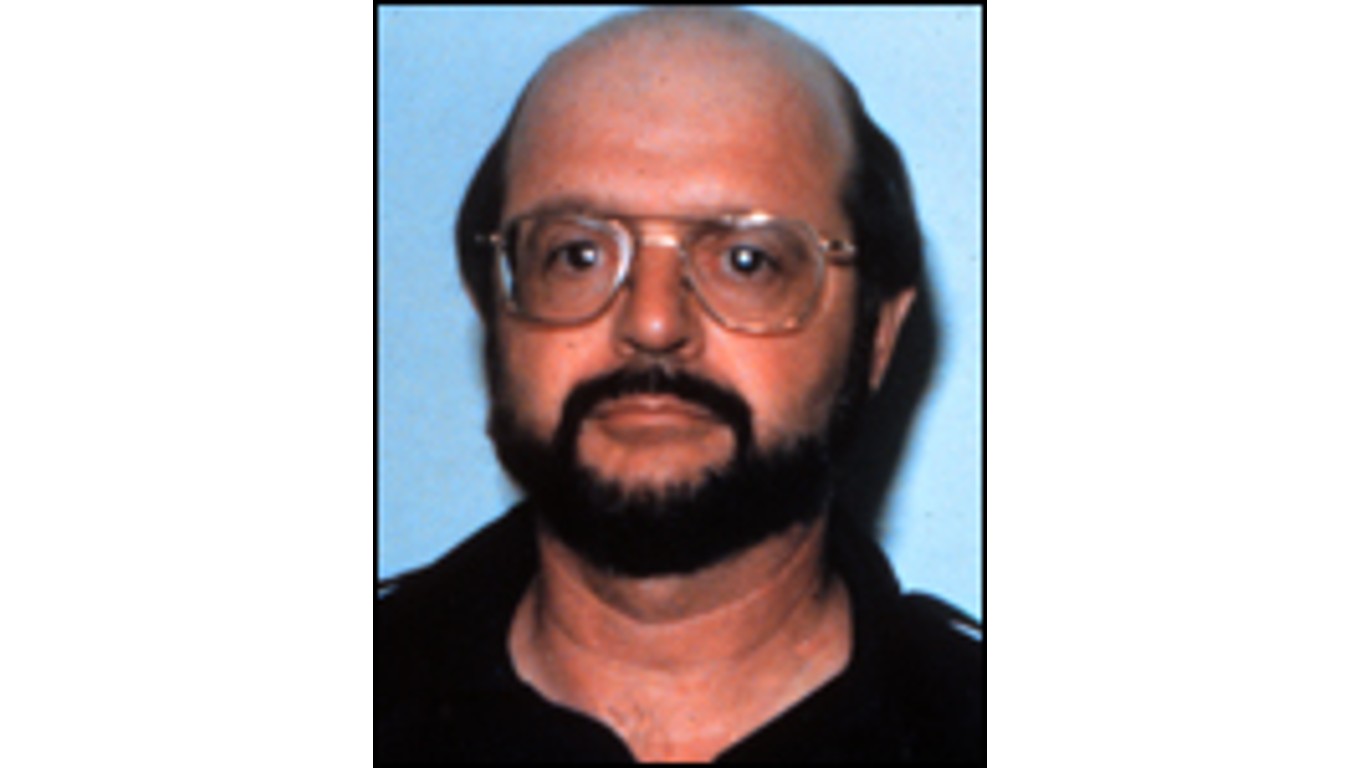
John Anthony Walker, Jr. (1937-2014)
From 1967 to 1985, John Anthony Walker, a Navy officer and communications specialist leaked documents to the Soviet Union including key information allowing the Soviets to solve ciphers and locate U.S. submarines at any time. His actions were the largest Naval security breach in history. Walker was convicted, given three life sentences, and died in prison in 2014.

Shi Pei Pu (1938-2009)
A Chinese opera singer who performed in drag, Shi Pei Pu worked in Beijing and developed a 20-year sexual relationship with a French embassy clerk named Bernard Boursicot, whom Pei Pu pressured into handing over classified documents. Boursicot eventually brought his lover to France, where they were both arrested and convicted of espionage.
[in-text-ad-2]
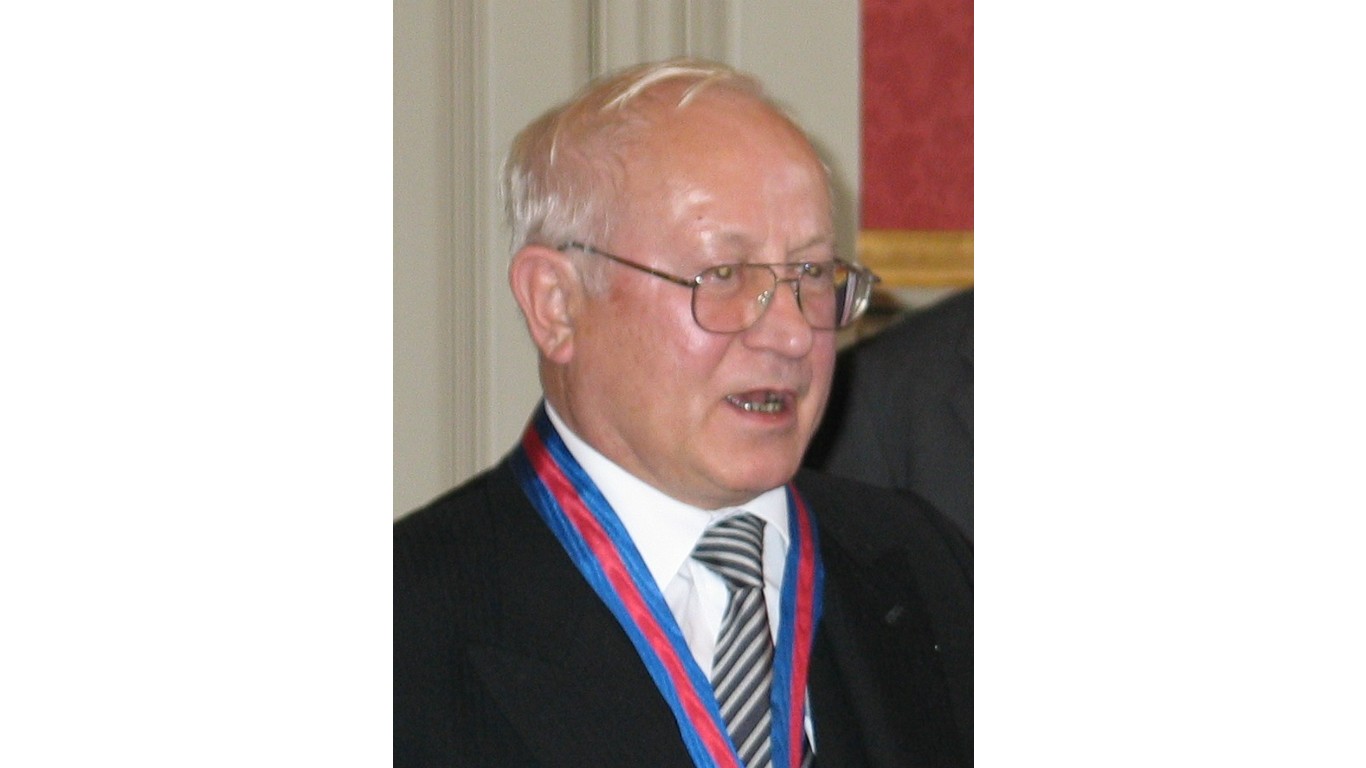
Oleg Gordievsky (1938- )
A KGB officer who became disillusioned with Soviet politics and served as a double agent for British secret services from 1974 to 1985, Oleg Gordievsky was one of the highest ranking KGB officers to ever supply secrets to western intelligence. After his position was compromised, he was snuck out of the Soviet Union with the help of the British, and was sentenced to death in absentia for treason.
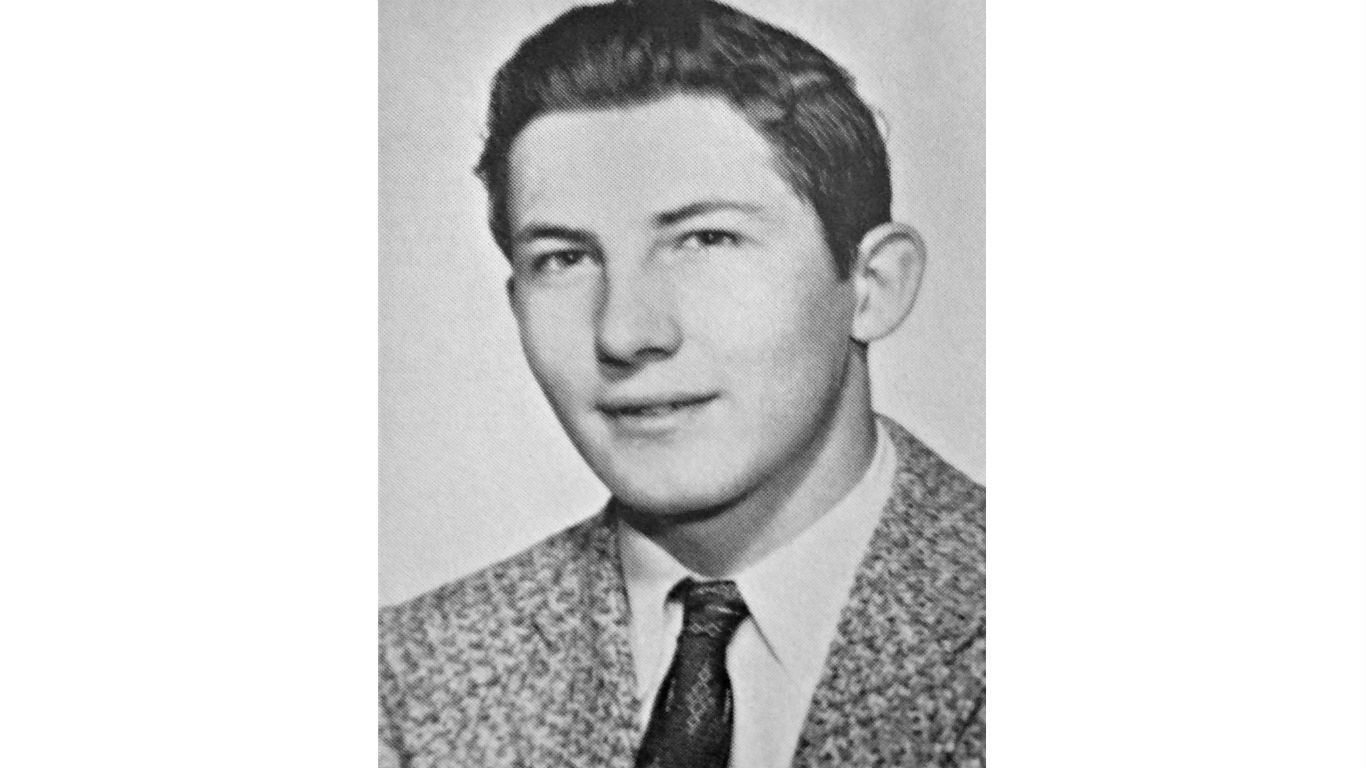
Aldrich Ames (1941- )
One of the most infamous and damaging CIA moles in history, counterintelligence officer Aldrich “Rick” Ames used his position as an analyst to cripple U.S. investigations in the Soviet Union and made over $2 million in exchange. He also named and compromised dozens of CIA assets in the Soviet Union, leading to many imprisonments and executions. He was eventually caught in 1994 and is serving a life sentence without parole.
[in-text-ad]
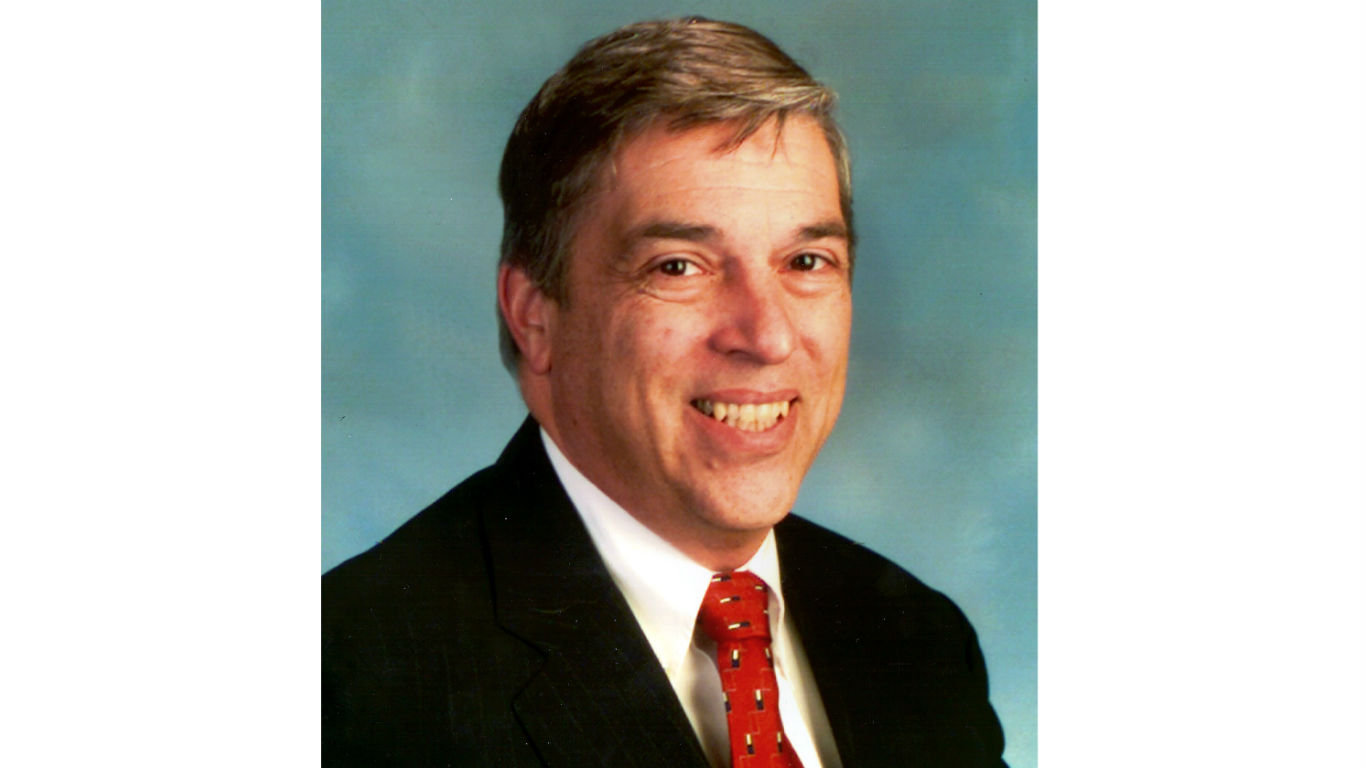
Robert Hanssen (1944- )
In exchange for over $1.4 million in diamonds, bank funds, and cash, FBI agent Robert Hanssen provided classified information to the KGB from 1979 until he was caught in 2001. He gave up the identities of U.S. operatives, details on nuclear operations, and the existence of an eavesdropping tunnel under the Soviet Embassy in D.C. Hanssen is considered the most damaging spy in FBI history and is currently serving a life sentence without parole.
Noshir Gowadia (1944- )
An Indian-born engineer who was one of the designers of the B-2 Spirit stealth bomber, Noshir Gowadia was arrested in 2005 on espionage charges, including selling defense information to China and other countries and designing stealth equipment Chinese use. He was convicted in 2010 and sentenced to 32 years in prison.

Sergei Skripal (1951- )
A Russian military intelligence officer, Sergei Skripal acted as a double agent for the U.K. in the ’90s and early 2000s, before being convicted of treason by the Russians in 2004. He was released as part of a spy swap in 2010, and settled in England. On March 4, 2018, he and his daughter Yulia were poisoned with a Novichok nerve agent in an alleged attempted murder, but both survived the attack. The Russian agents under suspicion of carrying out the attack are presumed to be residing in Russia.
[in-text-ad-2]
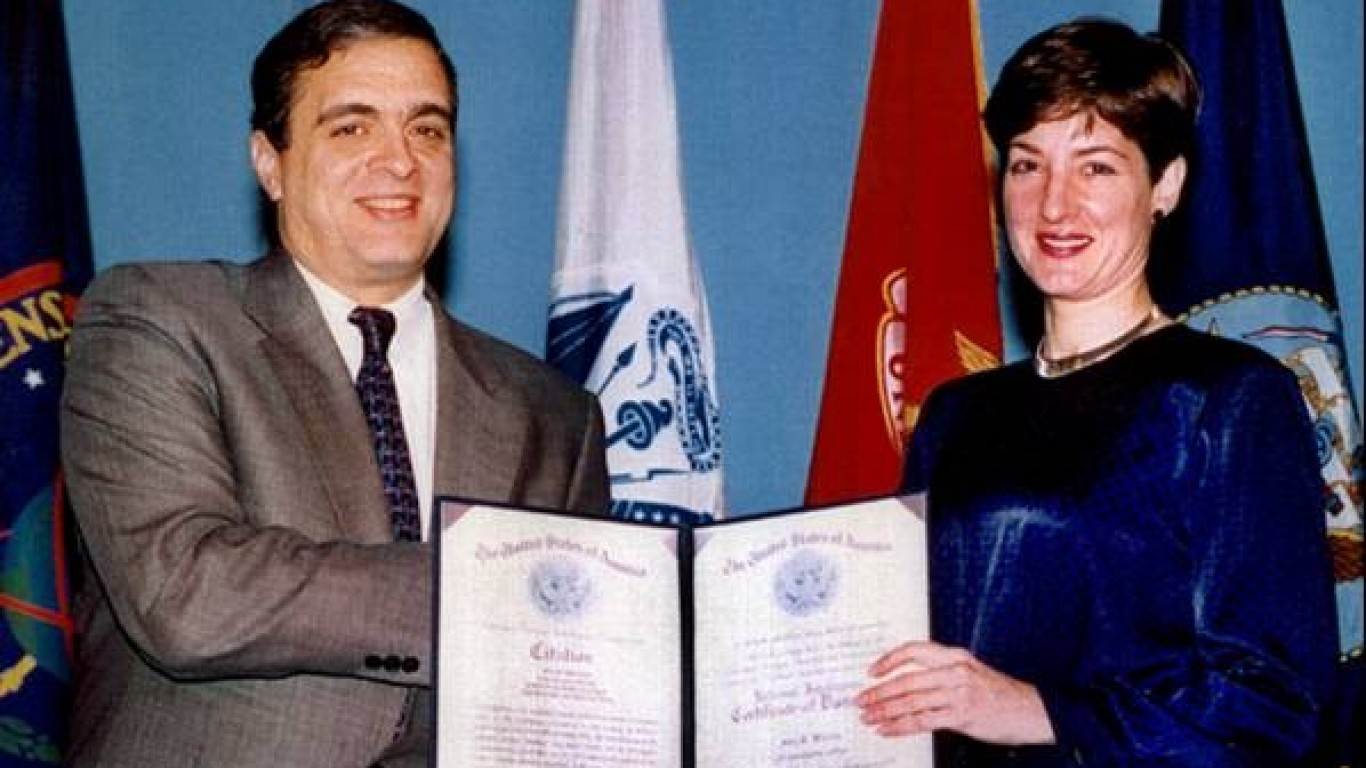
Ana Montes (1957- )
An intelligence analyst at the U.S. Defense Intelligence Agency, Ana Montes served as a spy for Cuba for 17 years starting in the mid ’80s. She exposed four U.S. spies in Cuba and compromised highly classified programs including a clandestine U.S. Army camp in El Salvador. She was arrested in 2001 and sentenced to 25 years in prison.
Thank you for reading! Have some feedback for us?
Contact the 24/7 Wall St. editorial team.
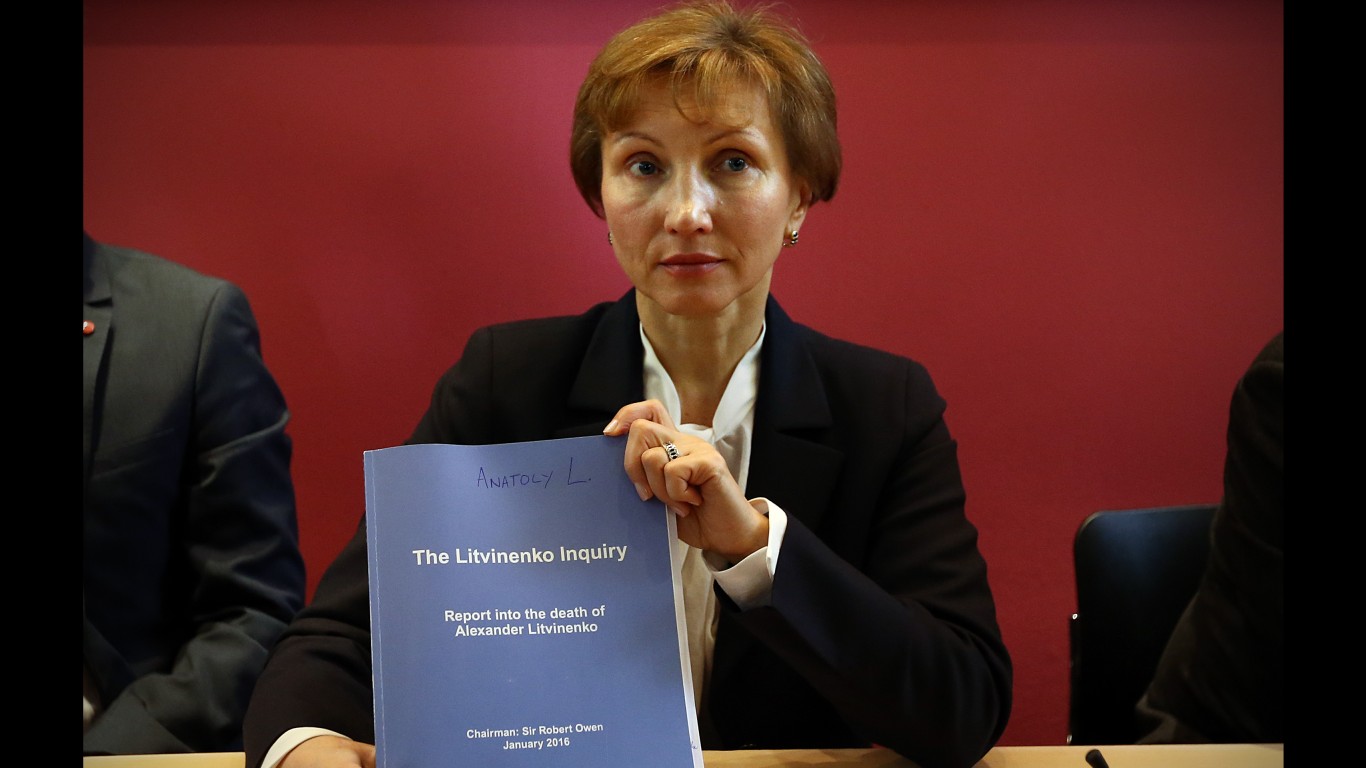 24/7 Wall St.
24/7 Wall St.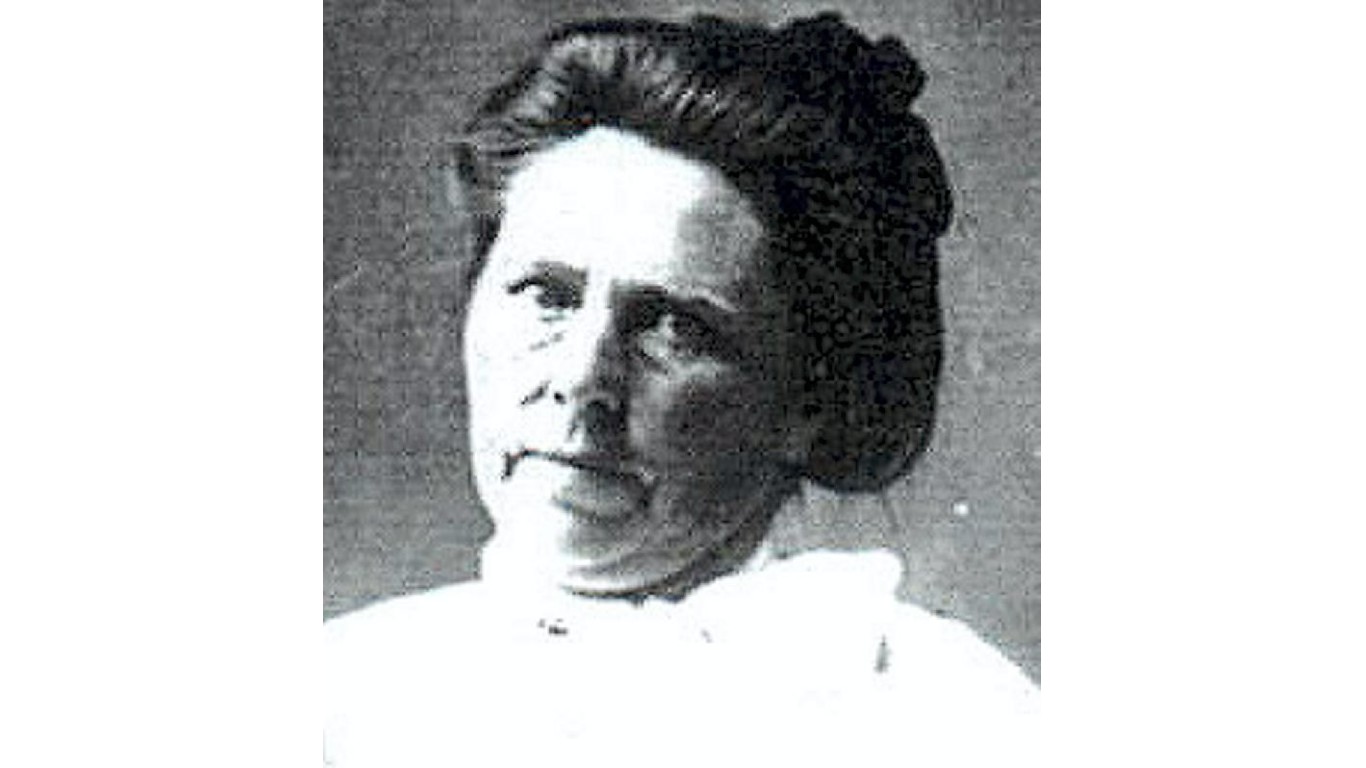 24/7 Wall St.
24/7 Wall St.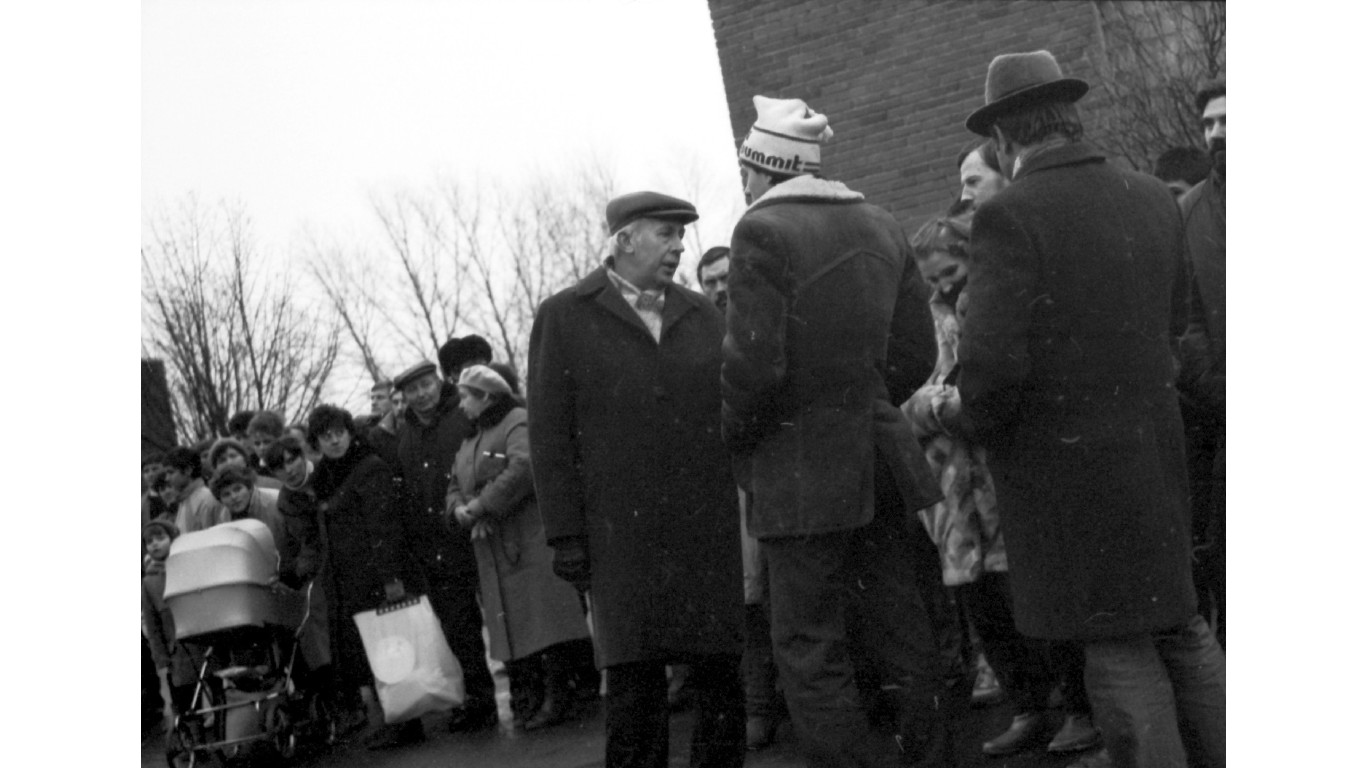
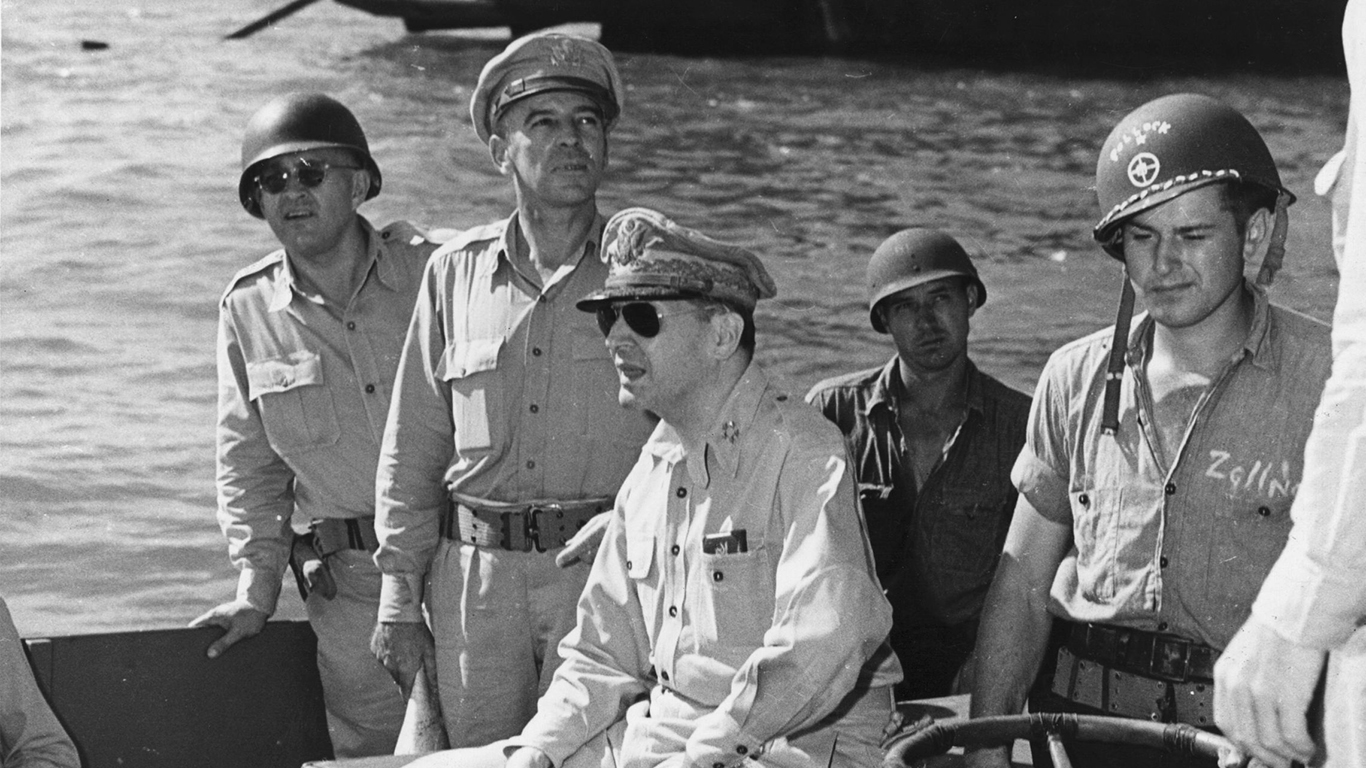 24/7 Wall St.
24/7 Wall St.